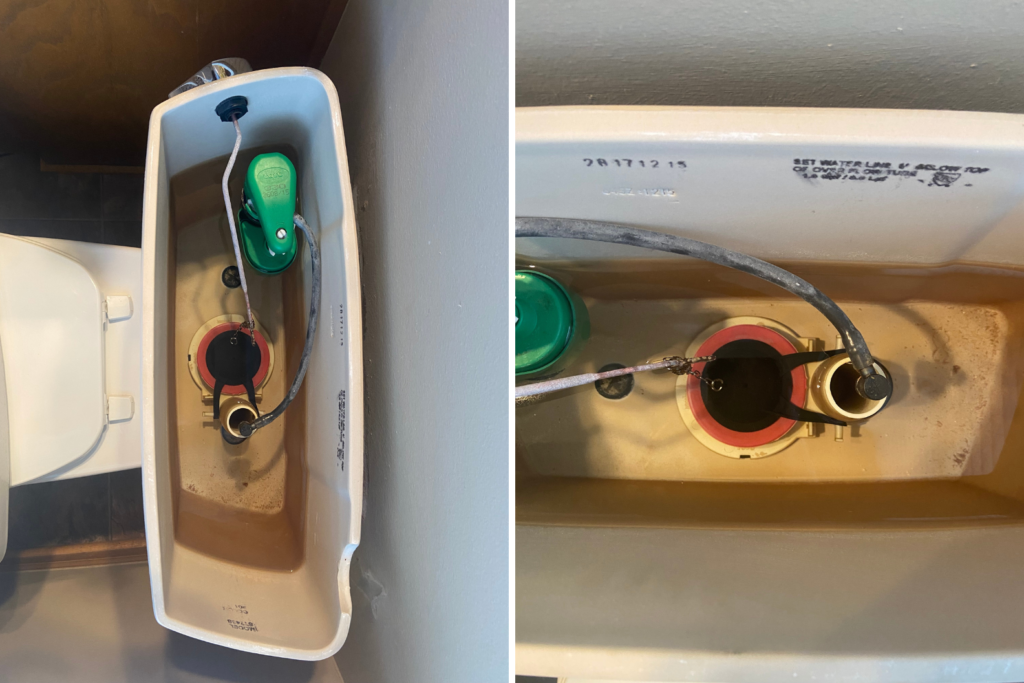Even if you’ve owned a home for years, you can likely remember that there may have been a little bit of a learning curve when you first became a homeowner. Especially if you were going from renting an apartment to owning a house, there were definitely a few more added responsibilities that you now had to take care of. While we could go on and on about what homeownership entails, this is a plumbing blog and you likely came here to learn about plumbing, right? Well…one aspect of homeownership is going to involve having a general understanding of your plumbing system. We’re not saying you need to know the in’s and out’s of every single plumbing component, but knowing enough to recognize when something isn’t right is a great starting point!
In this week’s blog post, we’ll discuss a handful of important plumbing components and talk about where you can find them in your house. These can serve a number of different purposes, so we definitely think this is worthwhile information that any homeowner could use! Before doing that though, we would like to say hello to any first-time blog visitors. Welcome to Stine-Nichols Plumbing! We are a residential, commercial and new construction plumbing company located in North Kansas City, MO. Since we opened our shop in 2014, we’ve taken pride in providing reliable and long-lasting plumbing services throughout the Kansas City area. Now, on to the topic of this week’s blog post: locating a few integral plumbing components!
Main Water Shut-Off
When I say that it’s important for homeowners to have a general understanding of their plumbing system, one reason for this is to limit the damage that can occur when something goes awry. While professional installations and routine maintenance are extremely important in limiting the number of plumbing issues that you’re faced with, there’s always going to be the possibility of a plumbing issue popping up. After all, each of the various components are put through consistent wear and tear throughout the year and none of the pieces (water heaters, faucets, toilets, etc) are built to last forever.
That leads us into our first plumbing component we’ll discuss today: the main water shut-off valve. This valve is responsible for allowing water to flow into the house. Keep in mind that you may also have individual shut-off valves for specific fixtures, such as a toilet or a faucet. These are installed so you can shut off water for a particular fixture in the instance that you need to make a repair or replace the fixture. However, back to the original point: the main water shut-off valve. Why is it important to know where this is? With frigid temperatures coming through Kansas City at the moment, we have a prime example of this to discuss. If you happen to have a frozen pipe that bursts, it can cause some damage in a hurry, right? Well…knowing the location of your main water shut-off valve can come in handy, as you’ll at least be able to limit the damage. This is why we encourage you to make sure that everyone in your household knows the location of it, as it can significantly lessen the amount of water damage you experience while you wait for a plumber to arrive on-site.
The next question is where can you find your main water shut-off valve? Your main shut-off should be close to where the water service line first enters your home from the city. Furthermore, if you have a basement, it’ll likely be down there. You’ll also notice that the water meter should be located close by as well. In any case, rather than waiting for an emergency to strike to prompt you to locate the main water shut-off, take a few minutes to do some searching and find it now!
Faucet Aerator
Our next topic of discussion doesn’t have as big of a job as the one we just talked about (main water shut-off), but it is nonetheless still important! As you can likely guess, a faucet’s aerator will be located on the faucet. No surprises there, right? The exact location though is on the end of the faucet (where the water comes out) and it’s definitely an important part of the overall operation. It is responsible for ensuring a consistent stream of water and can even limit the total amount of water used. While this is very important to know, they can get clogged up (especially if you have hard water). Mineral deposits get clogged up in the aerator and unless you regularly maintain it, this can affect its productivity.
The question then becomes: how can you get the faucet aerator unclogged? One easy way (if you don’t want to worry about having any trouble reattaching it) would be to fill a bag up with vinegar and soak the aerator in it. You can tape it to the faucet (or use rubber bands) to secure the bag. If you would like to remove the aerator though, you can usually screw it off with your hands. However, some may be on there tighter and require a little added power. In that case, you could consider purchasing an aerator removal tool, which are relatively inexpensive, or even pliers. Although, it’s important to be careful with pliers to ensure you don’t scratch the faucet! After removing it though, you’ll simply soak it in vinegar.
Flapper
The final plumbing item that we’ll discuss is a flapper, which is found in the tank of your toilet. We could likely fill an entire blog post just talking about the anatomy of a toilet. In any case, the flapper is responsible for serving as a seal separating the toilet’s tank from the bowl. Pretty straightforward, right? Unsurprisingly, flappers will be used quite often as the bowl re-fills with water after each flush. However, as a result of this usage, they can break down over time and require replacing. Luckily, a flapper replacement is a relatively quick process and the part itself is pretty inexpensive. Nonetheless, when they start experiencing issues, they’re not able to provide a strong enough seal. When this happens, water slowly trickles down to the bowl and the common “running toilet” follows!
If you want to check for sure whether or not you have a faulty flapper, follow these steps. Put some food dye in the toilet’s tank. Wait an hour or so and then return (without flushing or doing anything else to the toilet). If you see some of the colored water having made its way down to the bowl, then you have a faulty flapper!
Call the Plumbing Professionals at Stine-Nichols!
Do you live in or near the Kansas City area and need a reliable plumbing company that you can call in times of need? If so, we would be happy to have the opportunity to earn your trust! Our team of professionals possesses years of plumbing experience and are capable of taking on plumbing projects of all sizes. As evidenced by several of our previous weekly blog posts, your plumbing system is composed of many different items. And while you certainly don’t need to be an expert on all things plumbing to be a homeowner, it is important to have some basic knowledge of the components. At the very least, this will ensure you know when something is off and can get a plumber out as soon as possible.
Interested in receiving a free estimate for an upcoming project? No matter if it’s an emergency or just something routine, we’re always happy to help! To get in touch with our team, feel free to give us a call at (816) 348-3481 or fill out the form HERE. We hope you stay warm in this frigid weather!


